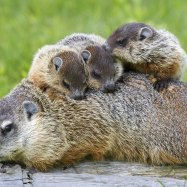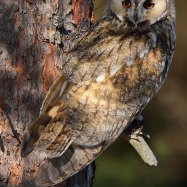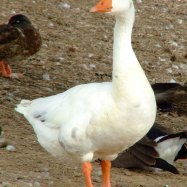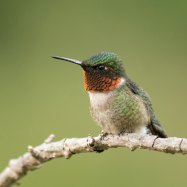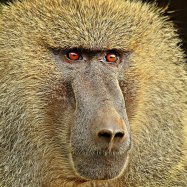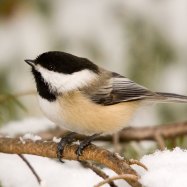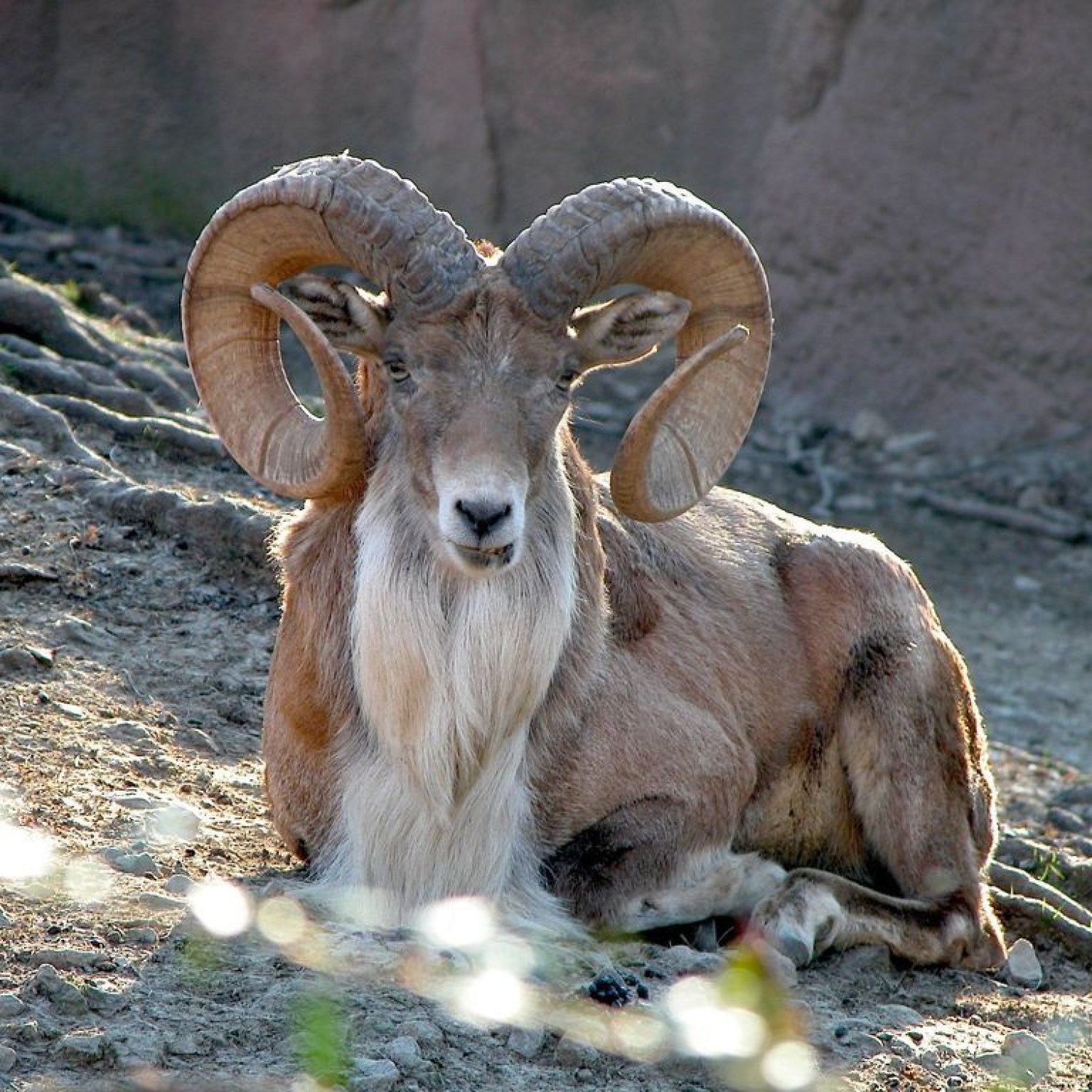
Urial
130-150 cm
Discover the majestic Urial, a medium-sized animal with a stocky build, found in the mountains of Northern Pakistan. Part of the Bovidae family, this unique creature can reach up to 130-150 cm in length. Its impressive presence makes it a must-see for wildlife enthusiasts. #animals #Pakistan #wildlife
Animal Details Summary:
Common Name: Urial
Kingdom: Animalia
Habitat: Mountainous regions
The Adaptations and Habits of the Urial
The Urial, scientifically known as Ovis orientalis, is a medium-sized wild sheep found in the mountainous regions of Central Asia. This magnificent animal has intrigued not only biologists but also the general public due to its unique adaptations and habits. In this article, we will delve into the fascinating features and behaviors of the Urial.Being a member of the Animalia kingdom, the Urial falls under the Chordata phylum, Mammalia class, and Artiodactyla order Urial. It is a part of the Bovidae family, just like its domesticated cousin, the domestic sheep. However, unlike the domestic sheep, the Urial has retained its wild instincts and thrives in its natural habitat.
The Urial is predominantly found in the mountainous regions, specifically in the northern parts of Pakistan, making it the country of origin for this species. Although it is also found in other Central Asian countries, Pakistan is the prime location for this animal. Its preferred habitat includes rocky hillsides, grassy slopes, and high-altitude plateaus, where it can graze on the vegetation that grows abundantly.
One of the most significant features of the Urial is its body shape, which is medium-sized with a stocky build. The average length of an Urial is between 130-150 cm, and they can weigh up to 50-90 kg. The males are considerably larger than the females, and they have impressive spiral horns that can grow up to 90 cm in length. These horns not only serve as a defense mechanism but also play a crucial role in establishing dominance and attracting mates Utonagan.
The Urial is a herbivorous animal, with its main diet consisting of grasses, herbs, and shrubs. Its grazing habits are essential for maintaining the delicate balance of the mountain ecosystem, thereby playing a vital role in the environment. However, due to habitat loss and human interference, the Urial's food sources are diminishing, putting the species at risk.
Another remarkable adaptation of the Urial is its coat coloration. It has a thick, brown coat that helps it camouflage into its natural surroundings, making it less visible to predators. This feature is essential for its survival in the harsh mountainous terrain, where predators like snow leopards and wolves are always on the prowl. The Urial has to remain vigilant at all times to avoid being hunted.
In addition to its physical adaptations, the Urial also has fascinating behavioral habits. They are social animals and live in herds, typically consisting of 20-40 individuals. These herds usually have a dominant male, who is responsible for protecting the females and their young ones. The females, on the other hand, take charge of grooming and raising the offspring.
During the mating season, which falls between October to December, the male Urials engage in a vigorous competition to win over the females. They use their massive horns to fight off rival males and emerge victorious as the dominant male in the herd. Once the mating is complete, the females give birth to one or two offspring, which they protect fiercely. The young ones stay close to their mothers until they are old enough to fend for themselves.
The Urial's geographical distribution plays a crucial role in its survival. As mentioned earlier, they primarily inhabit mountainous regions, specifically the high-altitude areas of Pakistan. This high altitude provides them with low temperatures and plenty of water sources, essential for their survival. The Urial has also developed the ability to conserve water, making it well-suited to its arid habitat.
In addition to the natural threats, such as predators and habitat loss, the Urial also faces challenges from human activities. Due to conflicts between humans and wildlife, the Urial population is declining rapidly. They are often hunted for their meat, fur, and horns, and their land is encroached for agriculture and urbanization. It is essential to raise awareness and implement conservation measures to protect this magnificent species.
In conclusion, the Urial is a highly adaptable and resilient animal, thriving in the harsh mountainous regions of Central Asia. Its unique physical adaptations, such as its coat coloration and massive horns, play a vital role in its survival. However, human activities pose a significant threat to this species, and it is our responsibility to ensure their protection. Let us appreciate and admire these extraordinary creatures and work towards preserving their habitat and maintaining a healthy balance in the ecosystem they call home.

Urial
Animal Details Urial - Scientific Name: Ovis orientalis
- Category: Animals U
- Scientific Name: Ovis orientalis
- Common Name: Urial
- Kingdom: Animalia
- Phylum: Chordata
- Class: Mammalia
- Order: Artiodactyla
- Family: Bovidae
- Habitat: Mountainous regions
- Feeding Method: Herbivorous
- Geographical Distribution: Central Asia
- Country of Origin: Pakistan
- Location: Northern Pakistan
- Animal Coloration: Brown
- Body Shape: Medium-sized with a stocky build
- Length: 130-150 cm
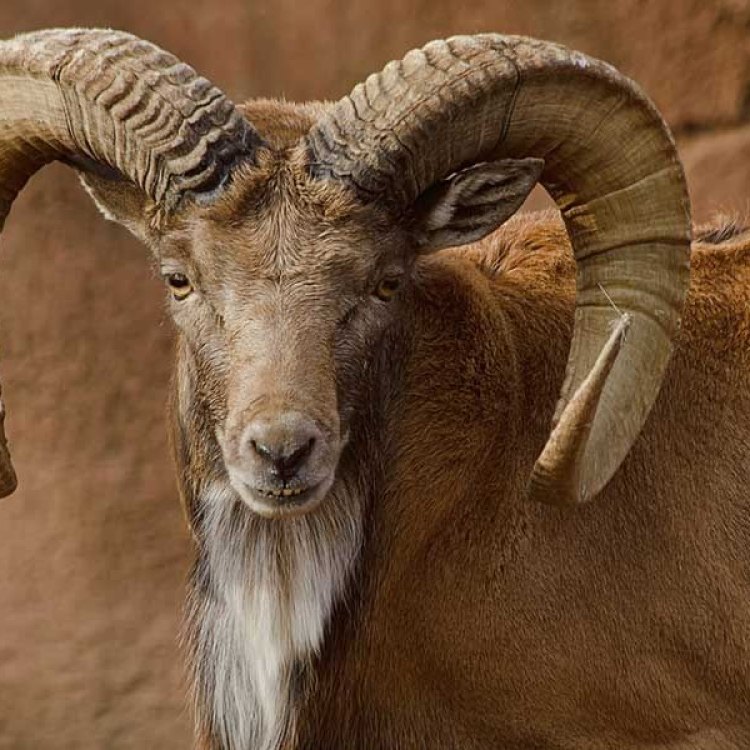
Urial
- Adult Size: 70-90 cm at shoulder
- Average Lifespan: 10-12 years
- Reproduction: Sexual
- Reproductive Behavior: Rutting
- Sound or Call: Loud, deep roar
- Migration Pattern: Non-migratory but may move to lower elevations in winter
- Social Groups: Harem groups
- Behavior: Territorial and aggressive during the breeding season
- Threats: Habitat loss, hunting, and competition with domestic livestock
- Conservation Status: Near Threatened
- Impact on Ecosystem: Important herbivores in the mountain ecosystem
- Human Use: Hunted for sport and meat
- Distinctive Features: Curved horns in males
- Interesting Facts: 1. Urial males engage in fierce battles during the breeding season to establish dominance. 2. They are excellent climbers and can navigate steep mountain terrain. 3. Urial populations have declined due to habitat loss and hunting. 4. They are adapted to life in high-altitude areas.
- Predator: Snow leopards, wolves
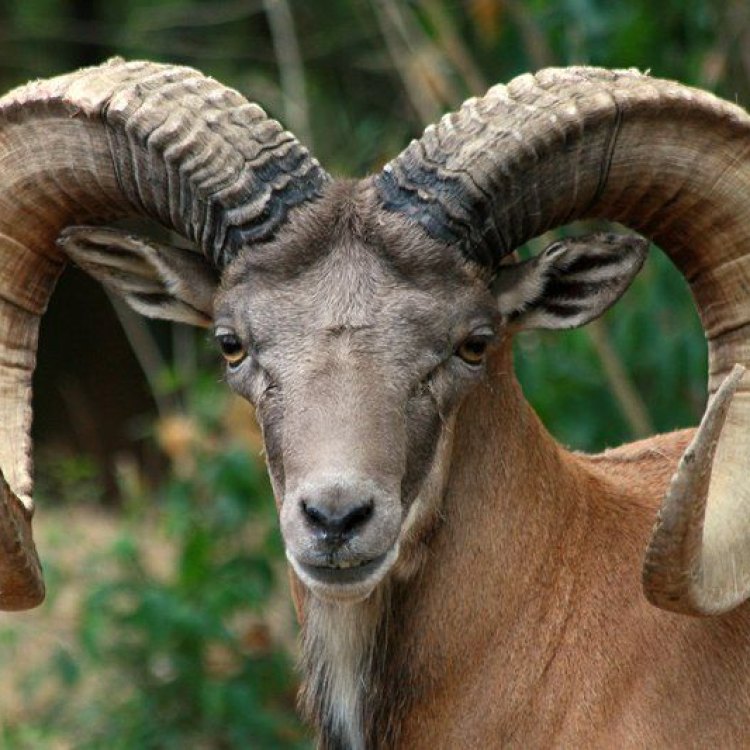
Ovis orientalis
The Mighty Urial: An Endangered Species of the Mountains
When one thinks of the great creatures that roam the mountains, images of majestic deer, powerful goats, and wild sheep may come to mind. However, there is one species that often goes unnoticed – the urial. With a distinctive appearance and unique behaviors, this species has long been an important part of the mountain ecosystem. But, unfortunately, due to human activities, their population is dwindling, making them a near-threatened species PeaceOfAnimals.Com.So, what exactly is an urial? And why is it so unique? In this article, we will delve into the world of this magnificent creature, exploring its behavior, habitat, and its crucial role in the ecosystem.
Adult urials are relatively small, measuring between 70-90 cm at the shoulder, making them a similar size to a large dog. However, don't be fooled by their size; these creatures are incredibly agile and sturdy. They have adapted to live in high-altitude areas, with thick, durable hooves that help them navigate the steep and rocky terrain.
One of the most exciting features of the urial is its impressive horns. Males have curved horns that can grow up to 80 cm in length, while females have smaller horns that are only 20 cm long. These horns are not only for display; they play a crucial role during the annual rutting season.
Speaking of the rutting season, urials have a unique reproductive behavior known as "rutting." During this time, males engage in fierce battles with rival males to establish dominance and secure a harem of females Underwing Moth. These intense clashes involve headbutting, ramming, and pushing, with the sound of their horns clashing echoing through the mountains. This reproductive behavior is not only a sight to behold but also a vital part of the species' survival.
While urials are primarily non-migratory, they may occasionally move to lower elevations in the winter to find more abundant food sources. Their diet consists mainly of grasses, leaves, herbs, and shrubs, making them important herbivores in the mountain ecosystem. As they graze, they help maintain the balance of their environment and prevent overgrowth of vegetation, ensuring other species have enough food to survive.
Urial social groups consist of a harem, which includes one male and several females. These groups are territorial, and during the rutting season, the males become extremely aggressive in protecting their territory and their harem. They will even mark their territory by urinating on rocks and trees, leaving a strong scent to warn off potential rivals.
However, despite their fierce nature during the breeding season, urials are quite shy and tend to avoid human contact whenever possible. Unfortunately, this has not stopped humans from encroaching on their habitat, leading to a decline in their population.
Habitat loss is one of the biggest threats to urials. As human populations grow, they continue to expand into mountainous regions, destroying vital grazing grounds for these creatures. Additionally, the competition with domestic livestock for food and water has also severely impacted urials. And to make matters worse, they are also hunted for their meat and sport, further contributing to their decline.
The decline in urial populations has led to their classification as a near-threatened species on the IUCN Red List. This means that they are at a high risk of becoming endangered if conservation efforts are not strengthened.
One of the primary ways to protect the urial is by preserving their habitat. Governments and conservation groups must work together to establish protected areas for the species and enforce strict regulations to prevent human encroachment. Additionally, educating the public about the importance of this species and the threats they face can also go a long way in their conservation.
Uri
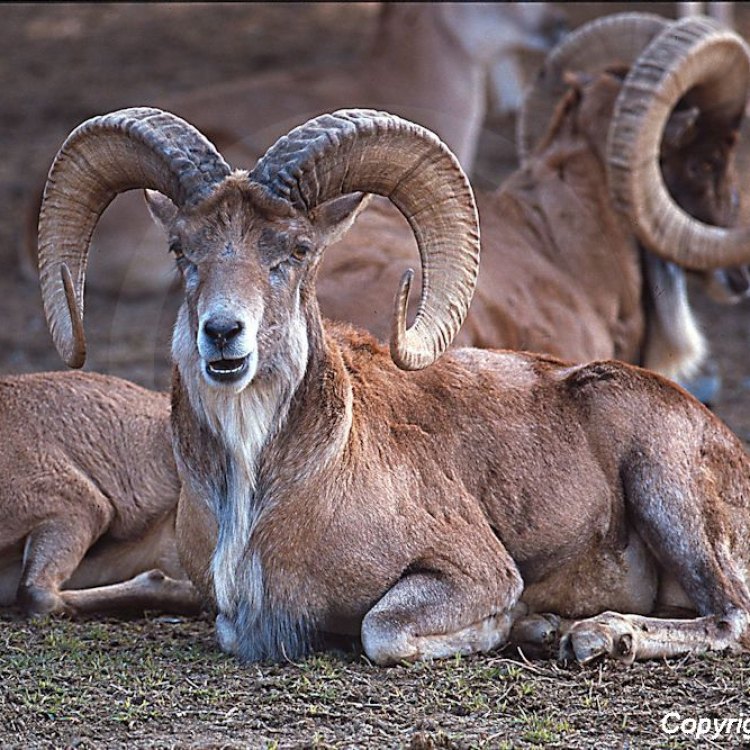
The Adaptations and Habits of the Urial
Disclaimer: The content provided is for informational purposes only. We cannot guarantee the accuracy of the information on this page 100%. All information provided here may change without prior notice.



